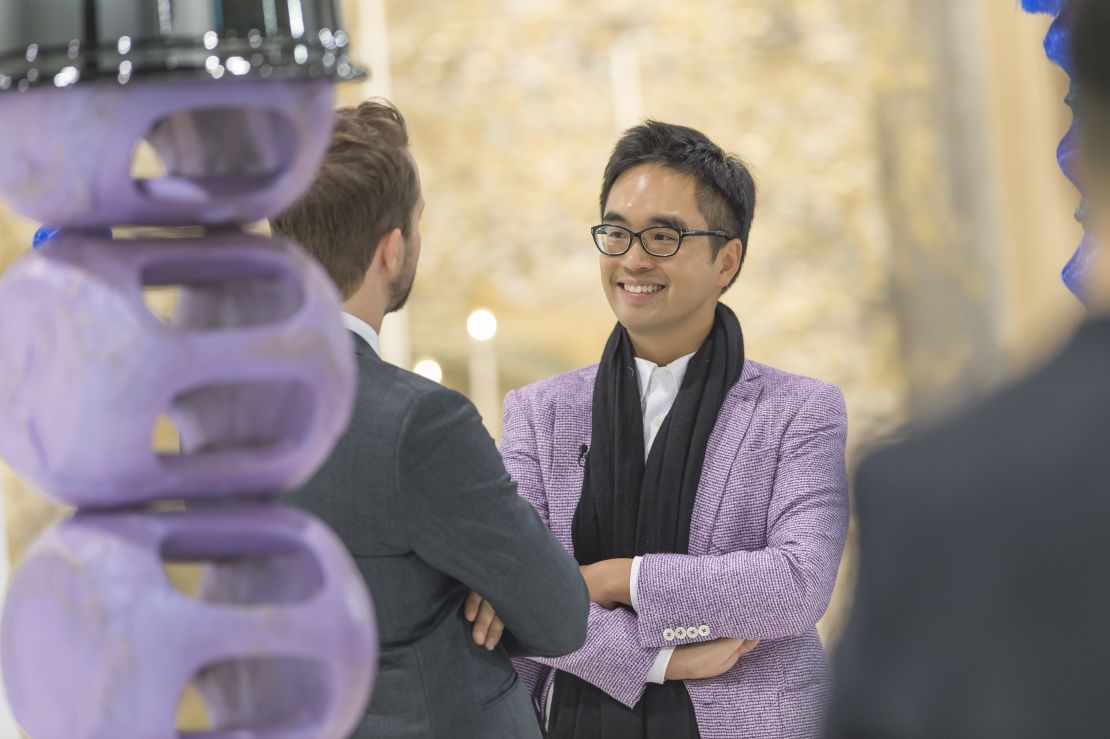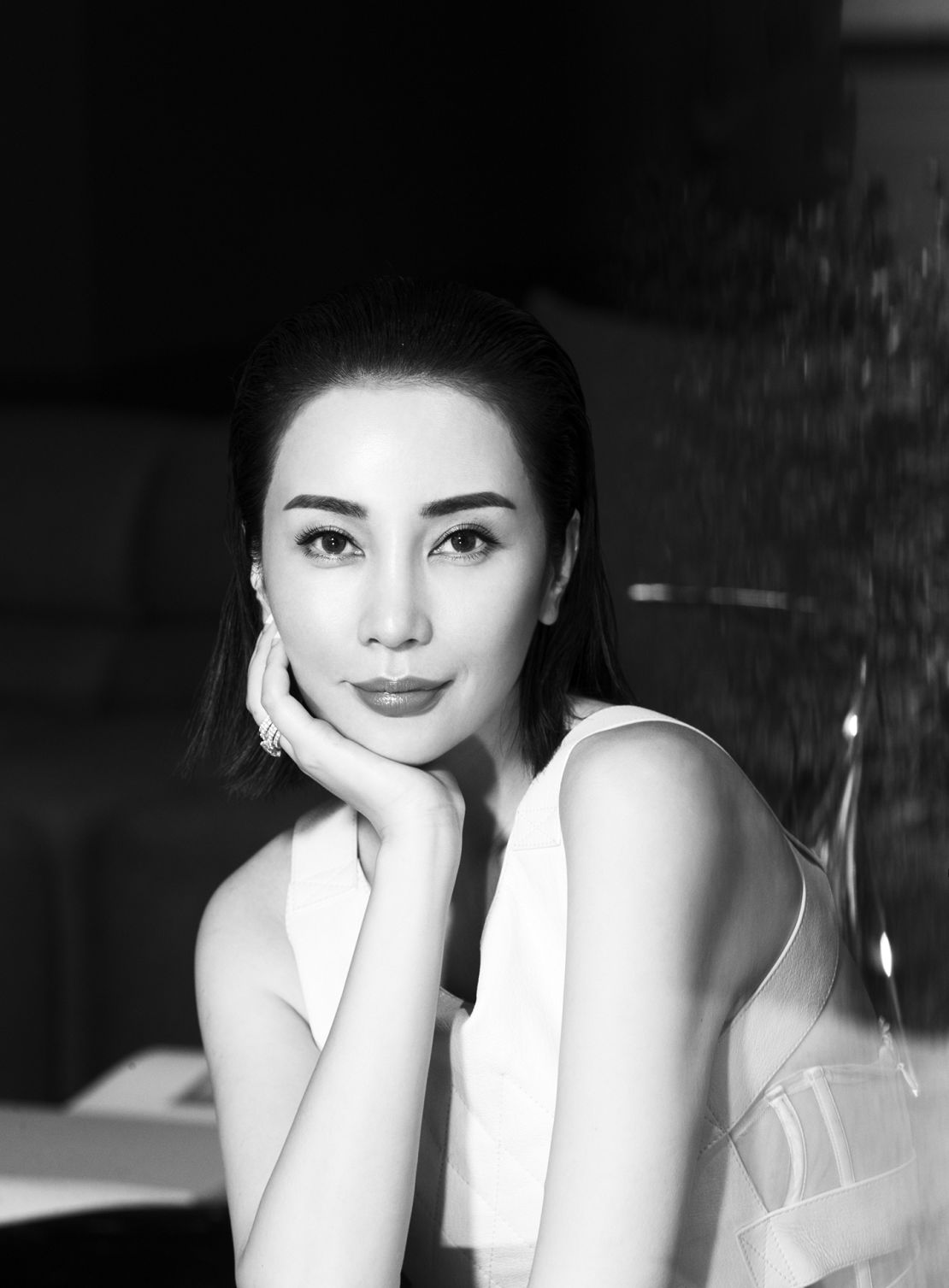Michael Xufu Huang is hard to miss. In March of this year, the Chinese art collector turned heads at a Guggenheim party by?showing up?in a white leather jumpsuit. A week later, he swept through the VIP opening of Art Basel in Hong Kong in a powder-pink,?pajama-style?outfit. But it’s not just Huang’s clothes that have art world insiders talking – it’s his age.
At just 23, Huang is part of a new generation of Chinese art collectors.?He began collecting?art as a 16-year-old high school student in London?and then?returned home to Beijing,?where he co-founded the contemporary arts museum,?M Woods.
The gallery’s?ambitious exhibitions of both Western and Chinese artists have attracted international attention.?But while Huang and his contemporaries clearly have money to spend, their approach to collecting is vastly different from the Chinese billionaires who shook up the art world in the?mid-2000s.
Changing tastes
Chinese collectors started making global headlines just over 10 years ago, and they quickly gained a reputation for buying big-ticket items by the best-known Western artists.

Among this early cohort were Joseph Lau, who bought one of Andy Warhol’s Mao Zedong portraits for $17.4 million?in 2006, and Wang Jianlin, one of China’s richest men, who paid $28.2 million for a Picasso. Billionaire and former taxi driver Liu Yiqian famously paid?$170.4 million for an Amedeo Modigliani painting – reportedly using his American Express card.
Western art is still a big draw for?Chinese collectors like Huang.
“The younger generation of Chinese collectors have been educated around the world,” he said. “We are global citizens, so works by artists from abroad echo our interests.”
But China’s new collectors aren’t only looking for big names. Heir to a property and?jewelry?empire, Hong Kong-based Adrian Cheng says that he owns?“hundreds” of works by both Chinese and Western artists – many of them up-and-coming.

“I travel across the world to view art – at art fairs, biennales, museums, exhibitions and more,” said Cheng, who?founded the not-for-profit?K11 Art Foundation. “I am fortunate to have come across art that may be of historical importance, representative of its time or simply moving. I am driven to collect these works, regardless of the where the artist comes from.”
Collectors’ understanding of art continues to grow, according to Lorenz Helbling, who founded ShanghART Gallery in Shanghai 21 years ago.
“(Chinese art collectors)?have become more knowledgeable, sophisticated and ambitious,” he said.
On the block
Auctions are still the marketplace of choice among China’s art collectors. Nearly 70% of artworks purchased in the country in 2016 went through auction houses, according to?a joint report?by Art Basel and the banking giant UBS.
Alex Chang, Managing Director of Poly Auction in Hong Kong, thinks auctions provide a level of reassurance for emerging buyers in mainland China. “In an auction, the lots are selected by the specialists and an estimate is made after thorough research,” Chang said.
“Thus the collectors will have sufficient background information to make a decision on placing a reasonable bid.”
Inexperienced collectors might feel less confident in a gallery or at an art fair, where the process for determining prices tends to be more opaque.
But while older, headline-grabbing businessmen seemed to relish the buzz – and publicity – of public sales, younger collectors have good reason for keeping a low profile.
China’s so-called fuerdai (literally “second generation rich”) are regularly?criticized?in the media for their flashy spending. And with many young?collectors at least partly funded by family money, they seem eager to prove that they’re interested in art as more than just a status symbol.
Auction houses are changing tack to cater to them. Sotheby’s, Christie’s and Hong Kong’s Poly Auction all?offer private sales that allow for discreet transactions. In the first half of 2017, Sotheby’s reported a significant rise in revenue from private sales – particularly in Asia.
“We have seen a strong upward trend in private sales with mainland Chinese clients in the past five years, and more than a three-fold increase in 2016 compared to the prior year,” a spokesperson said.?“In China and Hong Kong, the increase has been more than four-fold.”
Some young collectors like Kylie Ying, co-founder of the?ART021 Shanghai Contemporary Art Fair, eschew auction houses altogether.

“So far, I haven’t bought anything (that way),” she said. “I always buy through galleries – that’s my first priority.”
Other young collectors are turning to the Internet to scour the market. With auction houses like?Christie’s?now using social media to showcase items, Huang says that he can easily browse for international art on Instagram – despite the fact that the platform is technically blocked in Mainland China.
“I use Instagram more than auction catalogues to see what’s on the market,” said Huang, whose?own account?features pictures taken with the likes of contemporary artist Takashi Murakami and American curator Klaus Biesenbach.
This habit seems fitting for a collector whose portfolio is dominated by artists known for exploring the Internet’s impact on society. Huang’s collection includes digital art that would likely?be of little interest?to China’s older generation, like Instagram portraits from Amalia Ulman’s “Excellences & Perfections” series.
“The term ‘post-internet’ has almost become passé in the art world, but I think it still manages to encapsulate many of my interests,” Huang said. “I am fascinated with artists who respond to realities and social issues predicated by new technologies and mobile connectivity. I think these investigations reflect the language of today.”
Aspiring patrons
Works bought by China’s earliest band of collectors often remained hidden away their owners’ mansions. The wife of aforementioned billionaire Liu Yiqian admitted that some of the couple’s art was?stored in warehouses?before they opened a series of private museums around China.
But collectors like Huang, Cheng and Ying seem to be on a mission to share –?or at least appear to be sharing – their art with as many people as possible. Through both the K11 Art Foundation and the exhibitions hosted in his family-owned shopping malls, Cheng frequently makes art available to the public.
“We have presented blockbuster shows, such as (our) Monet exhibition, that had audiences lining up around the block,” he claimed. “We have introduced mass audiences to modern and contemporary art, bridging the chasm between the wider public and art.”
Unlike?the Cheng’s K11 Art Foundation and Huang’s?M Woods, the ART021 fair is an explicitly for-profit business. But Ying also insists that?she is motivated by?the desire to make art more accessible.
“Public education is also the vision of our fair,” she said. “We have free art talks and speeches during the fair. We are hoping that ART021 can be the first window for art to Chinese public.”












